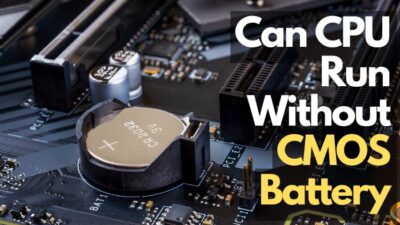It can be difficult to detect CPU socket damage. Because it is located behind the primary component.
However, when building a new system or cleaning an old machine. And, on occasion, an accident may occur while performing this task, causing damage to the processor socket. This may result in an error message or the PC failing to boot.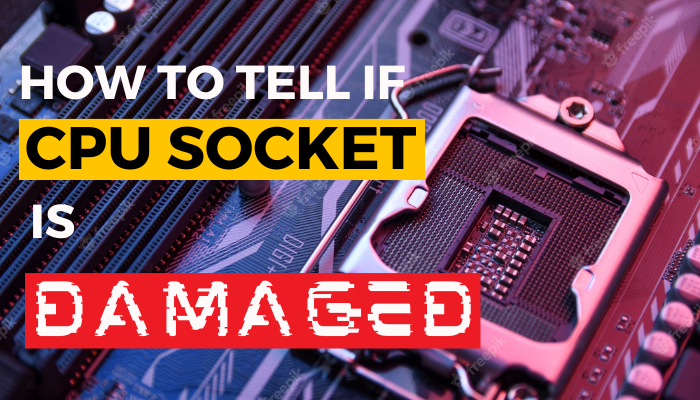
This can be really frustrating. And I know that. For that reason, let’s discuss more about the situations when socket damage is the issue.
How to Tell if Your Processor’s Socket is Damaged
When your computer refuses to boot, displays a blue screen, or has a connectivity problem. Also, a red light on the motherboard indicates that the processor is not connected. This all may cause by your processor’s socket damage. There might be issues with your CPU too.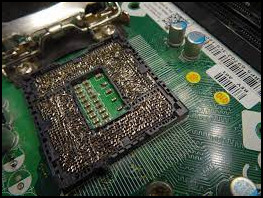
That’s why you need to check to confirm, which raises this faulty situations. A damaged socket can harm your precious processor, and also it can be harmful for other components. It’s like a small hole, that can sink a big ship.
That’s why if you encounter any issues, then you need to inspect properly and find out which causes these inappropriate behaviors. And at the same time, you need to be a little quick and cautious to find out why these behaviors occurs.
On a side note, check out our review for the best CPU coolers for the Intel LGA 1200 socket.
Let’s find out what can cause a processor’s socket damage.
What are the Causes of CPU Socket Damage?
One of the common reason for CPU socket damage is overheating. The CPU generates lots of heat, and if the heat doesn’t dissipate properly, it can damage the processor’s socket as well as the CPU. Incorrect inserting CPU or misuse of thermal paste may harm the socket too.
Like the CPU, the processor’s socket is one of the crucial components among the motherboard’s parts. Also, it has some built in systems to secures the CPU, like clips and lever.
Moreover, it’s possible to repair the processor’s socket, but if you are too late to determine the problem at the beginning, then it may harm the CPU permanently.
There are mostly two types of CPU socket available, LGA and PGA. AMD uses PGA design. As their CPUs have pins and CPU sockets have landing points where the pins are inserted. But, AMD’s 7000 series based on Zen 4 architecture started to use LGA design.
Intel always uses LGA design. In this design, CPU have flat surface and the socket have pins. And the CPU land on those pins. Sometimes when installing the CPU, the pins might get damaged and question might raise.
What will happen if CPU socket pins are bent?
Bent or broken pins can cause a wide range of damage. It may cause connectivity issue, refuse to boot or show blue screen. Also, it can show a red light on the motherboard, which means the CPU is not connected to the motherboard.
Here are some reasons that can cause processor’s socket damage:
Overheating
During normal day-to-day operations, the processor is idling in 5% to 20% most of the time. However, this can quickly increase with heavy workload or gaming.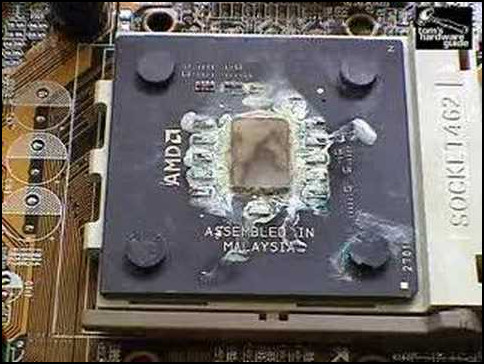
When CPU utilization is high, it generates a lot of heat. Incorrect cooling solutions can damage your CPU and CPU sockets. That’s why you need to routinely monitor your processor temperature, especially while gaming.
Also, you can add better cooling system to minimize the heat. Heat is one of the main culprit to damage your components. So, you need to take this seriously. You can use Core Temp, HWiNFO apps to monitor the temps. There are also many other apps which you can utilize.
Physical Damage
Inappropriate packaging during transportation, accidental drop can cause physical damage to the motherboard. Which also can happen to CPU socket. If you spill any liquids to the processor’s socket, that can harm it too.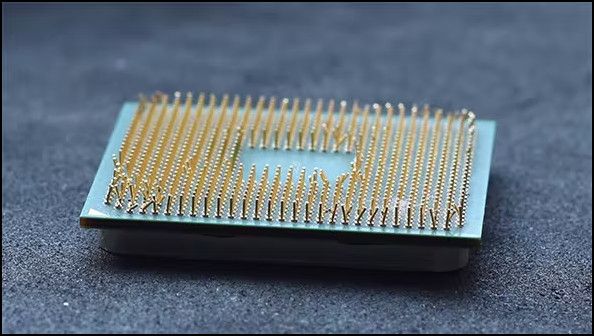
Motherboard are not fragile component. But it has many sensitive points. Like circuits, slots, and other small things. That’s why you need to be extra careful to deal with this type of hardware.
Improper Installation
Wrong installation of CPU in the socket can even put permanent damage to the socket, or CPU. If the socket have LGA design, then the pins could be bent for inappropriate CPU installation.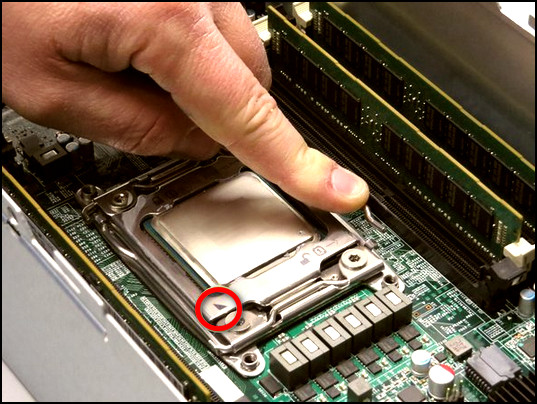
When installing CPU, you need to follow proper guide about CPU installation. You can follow the guide, that came with the motherboard.
You should also be careful when applying thermal paste to the processor. Over use, thermal paste, may not be harmful at the beginning. However, after a long period of time, when the thermal dries up. Cleaning the spread out paste from the CPU, and around the socket, feels very disturbing.
Age And Wear
You need to clean your CPU at least once in two years. Along with this, cleaning and insertion, and removal of processor can wear the CPU socket. Also, heating and other factors with time can cause socket damage too.
How to Analysis And Repair CPU Socket Damage?
To diagnosis the damage, first you need to find out the issue. CPU socket damage can be happened from many factors, and for the damage you will face many issues like overheating, no display, irregular restarts, and even no screen.
And as I already discussed, this issues can be appeared for physical damage, improper installation of CPU, age and wear, and many more.
If you run into issues, the first thing you should do is, carefully inspect the socket. Pins may be bent or broken, and the socket may be physically damaged. And you must inspect them thoroughly and patiently.
Furthermore, if you discover a problem with your CPU socket, you can replace it. However, proper experts are required to replace the processor’s socket. It is best, if you contact someone who has the necessary equipment and experience to complete this task.
It is best to take proper care of your computer to avoid CPU socket damage. You can keep your computer cool by cleaning the dust off the radiator. Also, keep the computer in a dry environment with proper airflow, to ensure that the CPU is not overheating.
Moreover, it will increase your CPU socket lifespan if you don’t overclock your CPU. Overclock is to get the upmost performance from your CPU and when you do that it generates lots of heat, thus damage the CPU and it’s socket.
Speaking of CPU socket, check out our discussion about how to tell if your laptop’s CPU is soldered to its motherboard socket.
FAQs
How do I recognize if my processor pin is harmed?
If the pin has been bent, there should be a small gap between the two ends. Attempting to insert a bent CPU pin into the socket is another way to determine if it is bent. If the pin does not line up properly with the socket or feels as if it is catching on something, it is most likely bent.
Can you replace a CPU socket?
Yes, a CPU socket can be replaced technically. After all, it is connected to the motherboard via pins soldered to traces on the motherboard. The old socket could be disordered on each and every pin before being removed. A new socket could be installed and all of its pins soldered in place.
Is CPU socket important?
Your CPU socket incorporates a processor into your computer by providing power and allowing the CPU to communicate with the rest of your system hardware. The CPU socket in modern computers is located on the motherboard.
Is a CPU socket the same as core?
A socket is the physical socket in which the CPU capsules are installed. A standard PC has only one socket. The number of CPU cores per CPU capsule is referred to as cores. A typical modern standard CPU for a standard PC has two or four cores.
Is CPU socket part of motherboard?
A CPU socket is a single connector that connects the microprocessor to the motherboard. A CPU socket is a specific mount on the motherboard that is used only for the CPU to ensure proper circuit chip insertion. It simplifies CPU access and protects the CPU when a unit is inserted or removed.
Final Thought
A processor’s socket can be damaged from various ways. Overheating, physical damage, age and wear can also harm the CPU socket. Proper monitoring of the machine, is one of the best method to prevent these damage from happening.
Moreover, if you face frequent restart, blue screen or no screen, and error messages than there might be chances that the CPU socket might be damaged.
And finally, if you encounter the issue of socket damage, and you like to replace that, then take it to the professionals. Otherwise, it may cause further harm to your motherboard socket.



